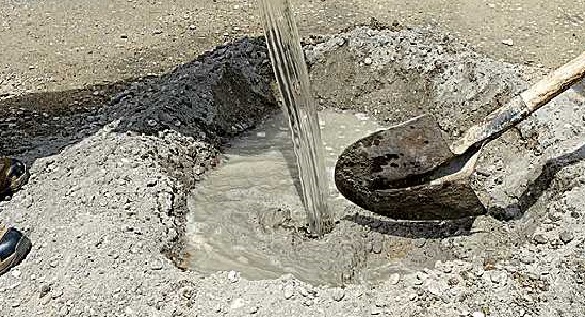Water in Concrete
Water is a necessary component of all hydraulic concrete. It is usually used in amounts of 25–50 weight per cent of the cement.
It has two engineering purposes: to enable (a) proper mixing, consolidation and finishing of the fresh mixture (workability); and (b) the chemical processes of hydration that are responsible for development and maintenance of the desired physical properties (setting, hardening, maturity).
For complete hydration of a typical Portland cement, about 20–22 weight per cent of water relative to the cement content is required. Any water in access of that is theoretically needed will increase to cement paste porosity. Because of its molecular structure and chemical nature, water is an excellent solvent capable of dissolving more chemical substances than any other liquid, it exists in three phases at ambient temperatures, and is capable of penetrating even the finest pores. This makes water the most important medium also from the point of view of durability, for it is the carrier of chemical species into and out of the concrete microstructure. Without water most mechanisms of concrete deterioration could not proceed.
The following water-related items should be considered in design, production, and protection of any concrete or concrete structure: chemical nature of the water (presence of organic or inorganic components, aggressivity, alkalinity or acidity, etc.), humidity and its changes, flow rate, action of waves,
and repeated drying and wetting.
